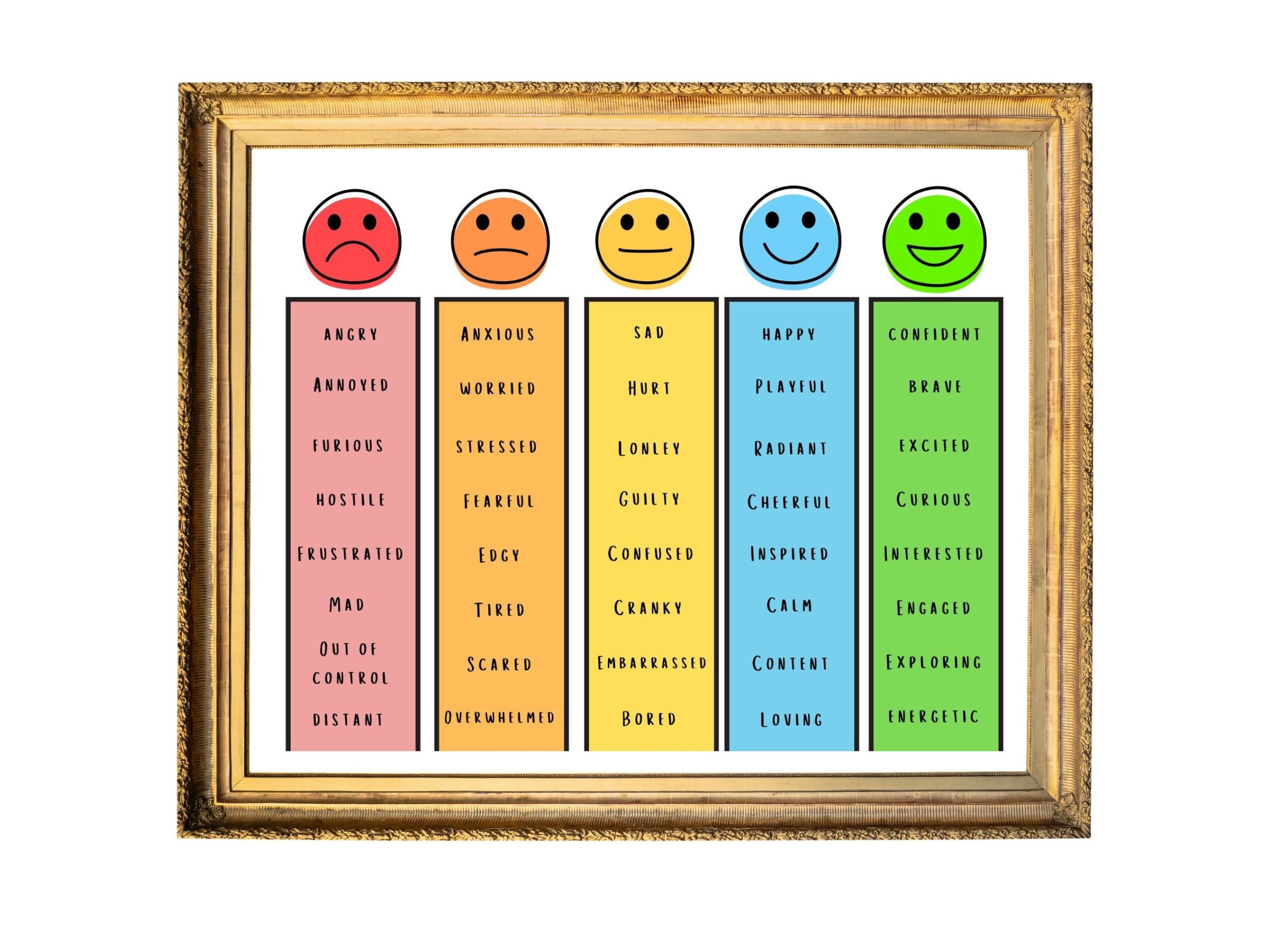Emotions are an integral part of human experience, shaping our interactions and perceptions of the world around us. Being able to accurately identify and express our emotions is key to healthy communication and self-awareness. One helpful tool in this process is an emotions vocabulary chart, which can provide a range of words to describe different feelings.
By expanding our emotional vocabulary, we can better articulate our inner experiences and connect with others on a deeper level. This chart can serve as a guide to help us pinpoint and label our emotions, leading to a greater sense of emotional intelligence and well-being.
Emotions Vocabulary Chart
Here are some common emotions and their corresponding vocabulary words:
- Joy – happiness, delight, contentment
- Sadness – sorrow, grief, melancholy
- Anger – rage, frustration, resentment
- Fear – anxiety, terror, apprehension
- Surprise – astonishment, amazement, disbelief
Each of these words represents a nuanced aspect of the broader emotion, allowing for a more precise and descriptive expression of how we feel. This can be especially useful in situations where we may struggle to accurately convey our emotions verbally.
Furthermore, having a diverse emotional vocabulary can help us better understand and manage our feelings. By being able to identify and label our emotions more specifically, we can take steps to address them in a healthy and constructive manner, rather than letting them simmer beneath the surface.
In addition, an emotions vocabulary chart can be a valuable tool in therapy or counseling settings, where individuals may be working through complex emotional issues. By using a shared language to describe emotions, both clients and therapists can more effectively communicate and work towards emotional growth and healing.
Overall, an emotions vocabulary chart can be a powerful resource for enhancing emotional literacy and communication. By expanding our emotional vocabulary, we can deepen our understanding of ourselves and others, fostering more meaningful and authentic connections in our relationships and daily interactions.
In conclusion, understanding and utilizing an emotions vocabulary chart can be a valuable step towards greater emotional awareness and well-being. By embracing the richness and complexity of our emotional experiences, we can cultivate a deeper sense of self-knowledge and empathy, enriching our lives and relationships in the process.
